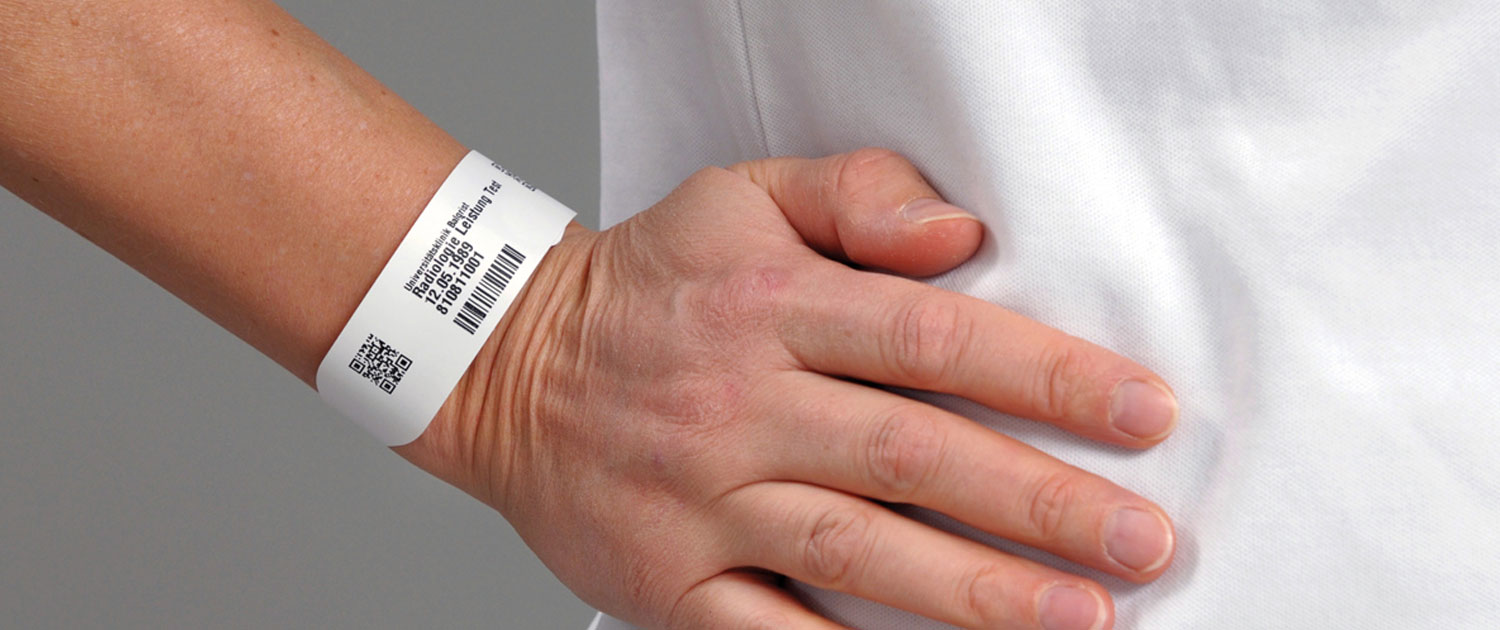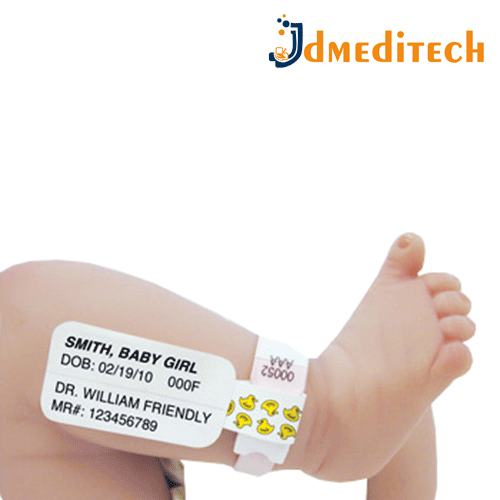Why a Patient Identification Band is Essential in Busy Environments like Emergency Rooms
Why a Patient Identification Band is Essential in Busy Environments like Emergency Rooms
Blog Article
Exploring the Numerous Sorts Of Patient Identification Band Made Use Of in Medical Facilities
In the detailed world of medical care, the essential duty of Patient Identification bands usually goes unnoticed. These bands, differing from simple paper wristbands to sophisticated RFID bands, create the backbone of Patient safety and security procedures, making certain precision in Patient Identification.
Understanding the Value of Patient Identification Bands
While they may appear like mere accessories, Patient Identification bands play an essential role in medical centers. These bands function as a crucial device for confirming Patient identity, protecting against clinical errors connected to misidentification. The bands generally show necessary info such as the Patient's name, age, blood group, and any well-known allergies. They allow medical care professionals to swiftly access this vital information, consequently promoting precise and punctual clinical therapy. Patient Identification bands additionally aid in improving management jobs, making sure exact record-keeping and payment. In spite of their simpleness, these bands personify the concept of Patient security, a foundation of high quality health and wellness care. Without them, the risk of medical errors, and consequently, Patient injury, could significantly increase.
Standard Paper Wristbands: Their Usage and Limitations
Conventional paper wristbands have actually been a staple in Patient Identification throughout various clinical facilities. While their use is prevalent, they harbor certain limitations that might affect their effectiveness in Patient management. This area will concentrate on the range of their application and the integral disadvantages connected with their usage.
Paper Wristbands: Usage Extent
In the realm of Patient Identification, paper wristbands have long held an important role. These bands are commonly utilized in outpatient setups, where the Patient's keep is momentary. The wristbands contain important information such as the Patient's name, date of birth, and a distinct Identification number. This simple, yet reliable system, enables doctor to promptly and precisely recognize clients, making certain the appropriate therapy is provided. Paper wristbands are also utilized in emergency situation situations, where fast Identification is critical. Their use expands to occasions like blood contribution drives and mass vaccination programs, even more emphasizing their versatility. Despite innovations in innovation, the simple paper wristband stays a cost-effective and reliable solution for Patient Identification in different health care circumstances.
Limitations of Paper Wristbands
Regardless of their extensive usage, paper wristbands are not without their drawbacks. In enhancement, paper wristbands commonly lack the technical capabilities of even more modern choices, such as barcoding or RFID chips, limiting their capability to merely presenting written details. Paper wristbands can trigger pain or skin irritation to some individuals, especially when used for extensive periods.
Barcoded Wristbands: Innovations in Patient Identification
While Patient Identification has long been an essential aspect of health care, the introduction of barcoded wristbands indicates a substantial leap onward. These bands leverage the simplicity of barcoding modern technology, permitting for Patient info to be swiftly scanned and accessed. They improve the rate and precision of Patient Identification, lowering the risk of medical mistakes associated with misidentification. Barcoded wristbands are affordable, very easy to produce, and get rid of handwriting mistakes usual with manual systems. Nevertheless, they are not without restrictions. While they offer renovations over traditional bands, the barcode can end up being worn or smudged, making it unreadable. Despite this, barcoded wristbands remain a necessary device in modern-day healthcare settings, symbolizing the intersection of technology and Patient care.
Superhigh Frequency Identification (RFID) Bands: an Action In The Direction Of Futuristic Health Care
The evolution of Patient Identification bands has caused the introduction of Radio Regularity Identification (RFID) Bands (patient identification band). These ingenious gadgets existing essential advantages for medical care centers, supplying a much more efficient and technologically progressed ways of Patient Identification. The application of RFID in health care is a significant step towards a more advanced technique to Patient monitoring and security
Understanding RFID Bands

RFID Bands: Secret Benefits
Largely, these bands improve Patient security by supplying exact, instantaneous Identification, therefore reducing medical errors. this page RFID bands can keep a substantial quantity of Patient information, including medical history and allergic reactions, making it possible for individualized care. Overall, RFID bands represent a considerable improvement in Patient Identification modern technology, benefiting both people and medical care providers.
Executing RFID in Healthcare
As we enter a technically sophisticated age, the application of RFID bands in medical care comes to be increasingly essential. These bands provide a smooth means to track and recognize people, guaranteeing their security and improving performance in therapy procedures. RFID bands supply many benefits over conventional Identification methods. They can save a substantial quantity of information, consisting of the Patient's clinical history and treatment strategies, which can be quickly accessed by doctor. This data helps doctors make educated choices concerning the Patient's therapy plan. RFID bands minimize medical mistakes by providing exact Patient Identification, which is vital in stopping misdiagnosis or wrong medicine administration. Hence, the application of RFID bands is a considerable step in the direction of boosting Patient security and health care distribution.

Color-Coded Wristbands: Aiding in Quick and Accurate Medical Diagnosis
In the bustling setting of a medical facility, color-coded wristbands have actually arised as important devices for swift and precise Identification of a person's medical condition. These wristbands, used by people, carry particular shades that match to various clinical conditions or conditions. This system is made to offer immediate visual hints to medical care suppliers, boosting Patient safety and care high quality.
Techniques for Reliable Execution and Monitoring of Patient ID Bands
Attaining ideal use of Patient Identification bands requires a well-structured strategy for their execution and management. Patient education is additionally important; individuals should recognize the purpose of the bands and the demand for their constant wear. It's crucial to have a back-up strategy in location, such as barcode scanning or biometrics, to make certain that Patient Identification is never ever jeopardized.
Conclusion
Patient Identification bands are critical in clinical centers to ensure safety and accuracy. Efficient application and monitoring of these bands can significantly reduce medical errors, increase effectiveness, and enhance overall Patient treatment.
These imp source bands, differing from simple paper wristbands to advanced RFID bands, form the foundation of Patient safety procedures, guaranteeing accuracy in Patient Identification.The evolution of Patient Identification bands has brought regarding the development of Radio Regularity Identification (RFID) Bands. Generally, RFID bands represent a considerable improvement in Patient Identification technology, benefiting both people and medical care service providers.
RFID bands decrease medical mistakes by providing accurate Patient Identification, which is vital in stopping misdiagnosis or wrong medication management. Patient education is additionally critical; individuals need to understand the purpose of the bands and the need for their continuous wear.
Report this page